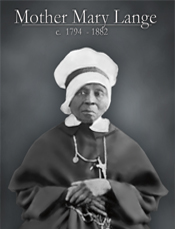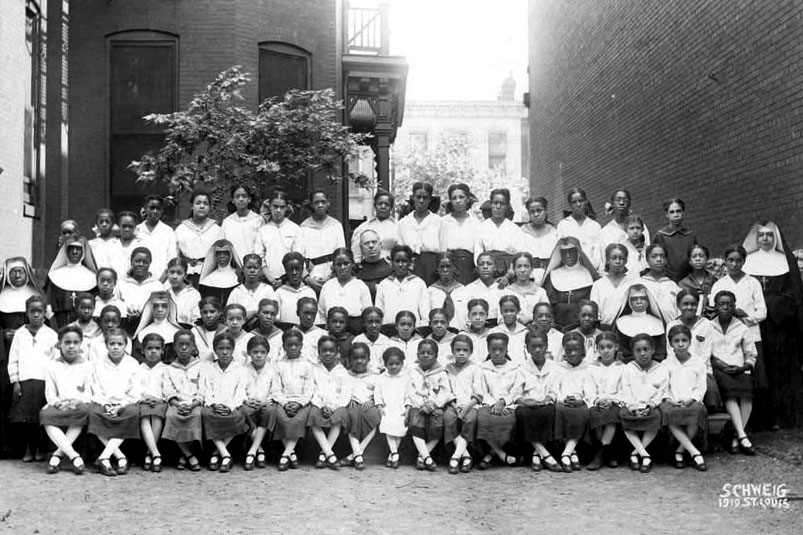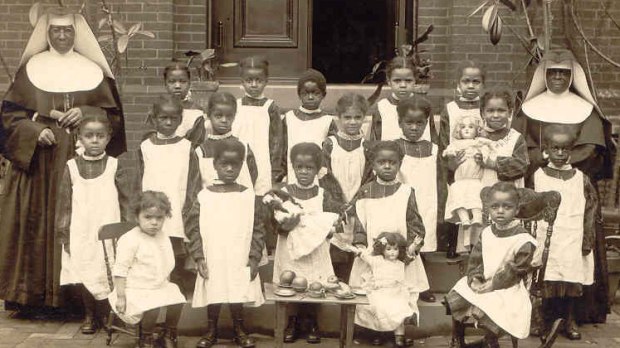In July of 1990, the National Black Catholic Clergy Caucus of the United States designated November as Black Catholic History Month. To be truthful, up until that time, I had never even heard of the Black Catholic Clergy Caucus or any other black Catholic organizations. I was truly pleased to find they existed.
Then a few years ago, I discovered a man named Augustus Tolton. Born into slavery in Missouri, Augustus became the first African-American to be ordained a Catholic priest in America. Declared a “Servant of God,” Father “Gus” may well become the black American to be canonized. Time will tell.
Discovering Father Tolton led me to other Catholic people of color, people who were ridiculed and persecuted because of their African heritage, people who stood tall in the face of adversity and, most of all, people who embraced their Catholic faith and became shining stars on the road to sainthood — people like Venerable Henriette Delille, who not only opened schools and homes for the sick and elderly but also founded a religious order, The Sisters of the Holy Family.

Servant of God Mother Mary Lange is another great Catholic woman who led a remarkable life and also is on the path to canonization.
There is a bit of confusion about where Elizabeth Clarisse Lange was born. She was most likely born in Haiti around 1790. That is not an absolute, but it is known that she did grow up in Santiago de Cuba, which is considered her birthplace. Elizabeth grew up in the French-speaking area of the city and was well educated. Tradition holds that she came from a family with an elevated social standing.
Beyond that, not much more is known of Elizabeth’s early years except for the fact she did leave Cuba to seek peace and security in the United States. She eventually settled in Baltimore, Maryland, where many French-speaking Catholic refugees from Haiti had settled. Elizabeth quickly recognized that the children of the many Caribbean immigrants needed education. A loving, courageous and deeply spiritual woman, Elizabeth was not only an independent thinker, she was also a woman of action.
Somewhere around 1818, Elizabeth and her friend Marie Madeleine Balas began offering free education to children of the migrants. They opened their home in the Fells Point area of Baltimore City and began teaching. They were black women in a slave state and the Emancipation Proclamation was still 50 years in the future. Elizabeth used her own money for supplies and charged nothing for her services. Since free public schools would not be available for children of color until 1866, the poor children in the area had become recipients of a miraculous opportunity.
Sometime around 1828 the Archbishop of Baltimore, James Whitfield, asked Father James Joubert, S.S., if he would ask Elizabeth Lange if she would consider starting a school for “girls of color.” For Elizabeth, this was an answer to her prayers. She confided in Father Joubert that she had been waiting for God’s call for more than 10 years. She asked if she could start a religious order and Father Joubert thought it was a fine idea. He agreed to provide guidance, solicit funds and encourage other “women of color” to consider joining the congregation. Elizabeth was overjoyed.

There was one significant problem with their plans. The social norms of the time meant black men and women were not allowed to be part of or even aspire to a religious calling. Once again, the hand of God would be needed to grace those involved, mainly Archbishop Whitfield. Standing against the culture of the day, the Archbishop agreed to allow Elizabeth and three other women to take vows of poverty, obedience and chastity. Thus began the order that is called the Oblate Sisters of Providence. From that point on Elizabeth Clarisse Lange was know as Mother Mary Lange.
Mother Mary worked tirelessly helping and teaching those who so desperately needed her and her followers. She was the Superior General of the order during the 1830s. She assisted night and day during two separate cholera epidemics, one in the early 1830s and another in the 1840s. She worked in domestic service and as the novice mistress as her newly founded order began to grow.
Being a black woman and a nun, Mother Mary had to fight off hatred, poverty and racial injustice. She never tired of fighting for those in need and lived to see the 50th anniversary of her order. Mother Mary Lange, feeble and almost blind, was relieved of her duties in 1876. She lived another 16 years and passed away on February 3, 1882. She was 92 years old, give or take a year or two.
In 1991, William Cardinal Keeler, the Archbishop of Baltimore, received permission from Rome to officially open formal investigation into the life and works of Mother Mary Lange. Since the cause for her beatification was started she has been honored as a “Servant of God,” the first step in the canonization process.
Servant of God Mother Mary Lange, please pray for us.

